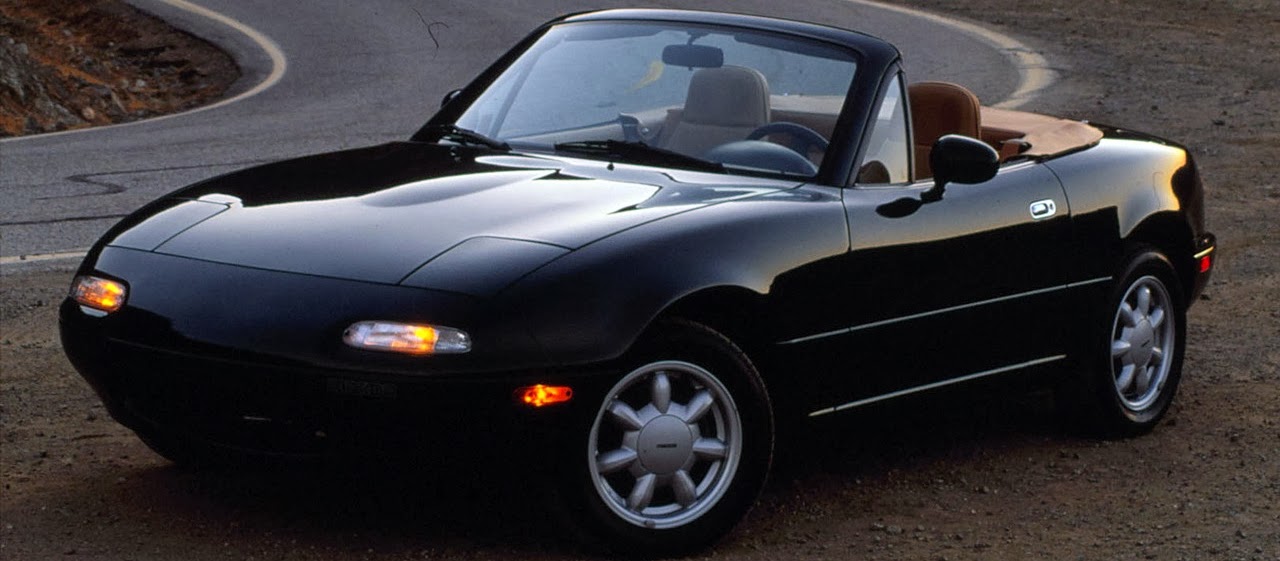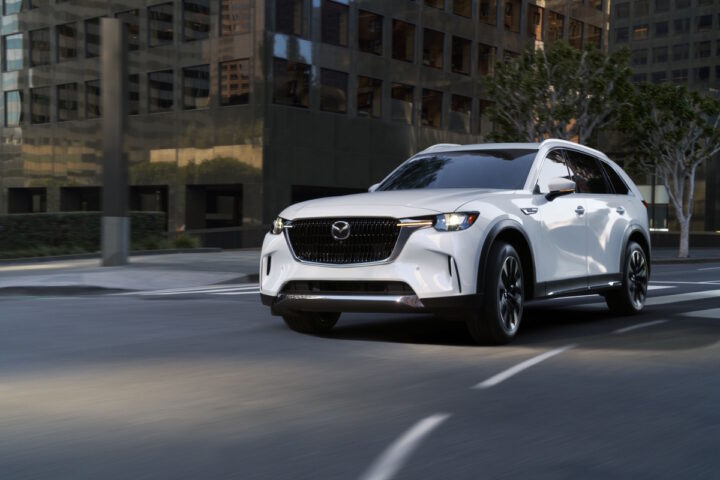– Celebrate the World’s Best-Selling Two-Seat Roadster on Twitter with hashtag #MX5Turns25 –
CHICAGO, Feb. 7, 2014 /PRNewswire/ — On February 9, 1989, the world was introduced to the all-new Mazda MX-5 Miata at the Chicago Auto Show. A few months later, it was named as one of the five “World’s Best Cars” by Road & Track and never looked back.
Twenty-five years later, MX-5 has racked up more than 200 awards and sold more than 920,000 worldwide as of December 2013, making it the Guinness Book of World Records holder for “Best-Selling Two-Seater Sports Car.” Adding to these great achievements, more MX-5s are road-raced on any given weekend than any other model of car.
“The MX-5 Miata has hit a number of milestones over the years and we’re honored to say that 25 years later it’s as much a global success and favorite among enthusiasts as it was on day one,” said Jim O’Sullivan, president and CEO, Mazda North American Operations (MNAO). “At the Chicago Auto Show in 1989, MX-5 Miata set the bar for sports car performance and driving pleasure. Here we are on its 25th birthday still looking up at that bar.”
MX-5’s success is that it has not strayed from its promise to deliver pure driving enjoyment at an attainable price. Its introduction in 1989 revived the two-seat roadster segment, and it went on to be named to Road & Track’s “World’s Best Cars” list and was 14-times one of Car and Driver’s “10Best”.
Enthusiasts are encouraged to wish the MX-5 Miata a happy birthday on Twitter using the hashtag #MX5Turns25.
25 Years of Greatness – A Look Back
Launched in May 1989 with a starting price of $13,800 MSRP, the first-generation MX-5 Miata featured a 1.6-liter four-cylinder engine with 116 horsepower and 100 lb-ft of torque. A five-speed manual transmission was standard, but a four-speed automatic was available as an option. Suspension was by independent double wishbone on all four wheels, and braking consisted of four wheel-disc brakes with the front ventilated. The engineering team created a three-fold, easy-to-operate soft top with one-hand operation that was lightweight and offered superior weather protection, and is still the model of simplicity in today’s roadsters. All together, the MX-5 Miata weighed a low 2,116 pounds curb weight and could reach 60 mph in less than nine seconds.
The second-generation MX-5 Miata debuted in 1998 as a 1999 model year, offering a more powerful 1.8-liter four-cylinder engine with 140 horsepower and 119 lb-ft of torque, and new styling that was most obvious in the front as the first generation car’s distinctive pop-up headlights were replaced with a faired-in design. In addition, the plastic rear window in the MX-5’s soft top was replaced with a heated glass window. Features such as a straight intake port, a variable-inertia exhaust system and a dual exhaust manifold were incorporated to aid the sporty feel. The base model could reach 60 mph in 7.9 seconds, with a top speed of 122 mph.
A special limited edition model was introduced in 1999 to celebrate MX-5’s 10-year anniversary. This model ramped up performance by use of a new six-speed manual transmission, Torsen® limited-slip differential and sport-tuned suspension with Bilstein® shock absorbers. A special Sapphire Blue Mica paint with blue soft top also was offered on the special edition model.
In 2005, the third generation MX-5 was introduced with a new 16-valve, 2.0-liter MZR I-4 engine, producing 170 horsepower and 140 lb-ft of torque, coupled to either a five-speed or a six-speed manual transmission or 166 horsepower with the optional six-speed automatic transmission. Every component on the car was either all-new or extensively revised, with the only part shared with the earlier generations being the side-repeater turn signal lamp on non-U.S. models. A front wishbone/rear multilink suspension was used beginning with the 2006 MX-5 to increase ride quality and handling. Technologies like traction control and stability control also were added.
Mazda North American Operations is headquartered in Irvine, Calif., and oversees the sales, marketing, parts and customer service support of Mazda vehicles in the United States and Mexico through more than 700 dealers. Operations in Mexico are managed by Mazda Motor de Mexico in Mexico City.
Source: Mazda North American Operations
Photo: PR NEWSWIRE



















